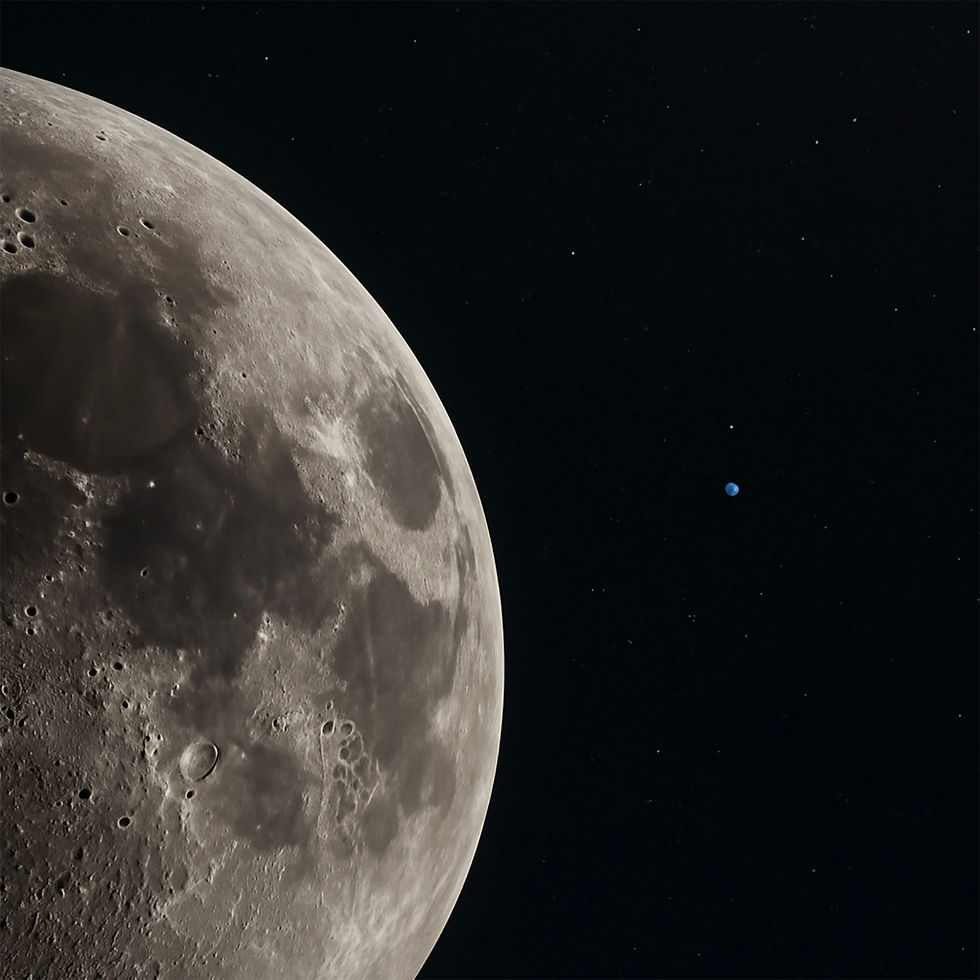Carl Sagan - Part 3: The future of humanity & the pale blue dot (#404)
- Rick LeCouteur
- Oct 1
- 3 min read

I wrote this third part of this series because Carl Sagan’s legacy isn’t only about the tools of skepticism or the politics of science. It is about what comes next.
Sagan never separated science from responsibility. For Sagan, looking outward toward the stars was always bound up with how we care for our own fragile world.
This final part of the three part series reflects on Sagan’s most enduring vision: the future of humanity, as seen through the lens of the Pale Blue Dot.
The Pale Blue Dot
In 1990, the Voyager 1 spacecraft, on the edge of the solar system, turned its camera back toward Earth. From that unimaginable distance, our planet appeared as a single pixel, a tiny mote of light suspended in the vast darkness.
Sagan’s reflections on this photograph have become some of the most quoted words in modern science:
That’s here. That’s home. That’s us.
On that dot are every human who ever lived.
Every war. Every triumph. Every discovery. Every act of love.
Sagan’s meditation was both humbling and elevating: a reminder of our smallness in the cosmic scale, but also of our immense responsibility to one another and to the only world we have.
The Fragility of Civilization
Sagan understood how precarious civilization is. He warned against nuclear war, unchecked climate change, and reckless technological pursuits. For him, the danger lay not only in the challenges themselves, but in how easily societies can abandon reason in the face of fear or ideology.
He described this as a combustible mixture of ignorance and power. One that, if left unchecked, could undo centuries of progress. Sagan believed that science, applied responsibly, was humanity’s best defense against self-destruction.
Planetary Stewardship
The Pale Blue Dot was more than a photograph. It was a manifesto for planetary care.
Sagan argued that Earth is the only home we have ever known, and that its preservation is both a scientific and a moral obligation. Long before sustainability became a common phrase, he was urging us to recognize the interconnectedness of life and the consequences of ignoring ecological balance.
Climate change, biodiversity loss, and environmental degradation were not abstractions to Sagan. They were urgent challenges requiring evidence, action, and collective will.
Beyond Earth: Exploration and Destiny
Sagan also believed that humanity’s destiny lay among the stars. Exploration, he argued, was part of who we are - woven into our nature as a curious, restless species. He saw space exploration not as escapism, but as a natural extension of human growth and survival.
The Voyager Golden Record, which he helped design, symbolized this vision: a message in a bottle launched into the cosmos, carrying the sounds and images of Earth. It was an act of optimism. A declaration that we mattered, and that we hoped to meet others among the stars.
For Sagan, going beyond Earth was not about abandoning our planet, but about ensuring the continuity of life itself.
Science, Hope, and Responsibility
At the heart of Sagan’s message was optimism. He believed that science was more than equations and experiments. It was a source of wonder, humility, and hope. His most famous line - Somewhere, something incredible is waiting to be known - captures that spirit.
But Sagan’s optimism was never naive. He coupled wonder with responsibility, insisting that the tools of skepticism (Part 1 of this series) and the lessons of science in society (Part 2 of this series) must ultimately lead to a deeper care for our shared future.
Rick’s Commentary
As I close this series, I find myself returning to Sagan’s Pale Blue Dot. For me, it is not just an image. It is a moral compass. That faint speck reminds us of both our smallness and our greatness: small in the cosmic sense, but great in our capacity to care, to imagine, and to act responsibly.
Sagan’s brilliance was that he could give us both skepticism and wonder.
Both are tools for thinking and reasons for dreaming.
Carl Sagan showed us that the cosmos can humble us without diminishing us.
As a veterinarian, scientist, writer and teacher, I see in Sagan’s words a call to integrate reason with compassion and knowledge with stewardship.
If we can learn from Sagan to think critically, to lead wisely, to preserve our fragile planet while daring to explore the stars, then perhaps we will have honored his greatest gift.
Carl Sagan’s candle in the dark still burns, guiding us not only to survival, but to significance.



Comments